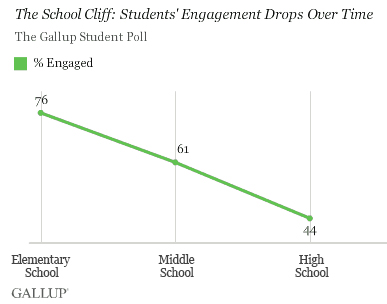
I have been reflecting on the positive aspects of change for several months/years now and in my post Catching the Openness to Change I indicated that as a result of our many moves and life in different cultures my boys have become much more adaptable, appreciative, accepting, resilient and open to change. I also reflected on how my boys have expanded their comfort zones, explored new opportunities, developed new relationships, acquired new mentors and learned how to deal with a wide variety of physical challenges. My grand experiment in becoming an Intentional Father and helping my boys grow into positive young men appears to be working and the past five months have confirmed that practicing change is necessary if you expect to your children to continue to grow in the attributes that I listed above and to also learn how to set priorities and discern what is genuinely important and what is not.
This past weekend my family and I moved from Chilliwack to North Vancouver. Since this was the fourth major move we made this year we have a lot of practice so the move was virtually stress free and went off without a hitch. Marilyn and the boys left Edmonton at the end of June and moved into a condo in the Silver Star Resort in Vernon for the month of June. The next move was to Chilliwack to stay with family for just under a month and then the move to Whistler for almost two months and finally this past weekend, after a couple more weeks in Chilliwack, we all moved into a house in the Lynn Valley area of North Vancouver. Everyone is quite excited to finally stay in one place for the next five months. That is right; we only have a five month lease and we are considering several options for the next year so there will be a few more moves to come. I also need to add that while my family has been moving from mountain to mountain, I have also maintained a very small apartment in Burnaby on the edge of the BCIT campus where I am currently employed, so in addition to moving my family I have also had to move. If you haven’t had the chance to follow our story in my previous posts I encourage you to review the post in the Intentional Father category of my blog.
Why all the moves? Levi and Caleb have been involved in DownHill (DH) mountain biking for the past eight to ten years and last year they decided that they would like to race DH and work toward becoming professional racers/riders. Since there aren’t any mountains in Edmonton, and the type of commitment racing and turning pro require, we realized that we would have to move to either the interior of BC, or the North Shore/Whistler area to enable the boys to ride and train year round. This past summer the boys raced in the BC Cup circuit and gained some valuable experience and by the end of the season both had top ten finishes so the dream of riding full time is a not too distant reality. Over the past five months we traveled the province of BC to attend all the races and also explored living in Vernon/Silver Star and Whistler and now we are exploring the North Shore of Vancouver. We have learned that you can’t just vacation or visit a place. You need to have to have an extended stay where you actually live in the location to really understand the culture and the dynamics of the community.
A couple of days into this latest move the boys have their guitars and amps set up, the living room has been set up as a bike shop, because their high-end bikes require extensive daily maintenance, and they have started riding Mount Seymour and Fromme North Shore trails in pursuit of a good place to practice their skills. Can’t forget to mention the fact that the boys are also working daily on their high school studies. The last couple of weeks have been a bit more challenging because of two moves so close together and Levi’s latest results on a Physics exam were a little disappointing but his attitude–that he just has to work harder and be more disciplined means that he is on the right track–this attitude is a result of encouragement from one of Levi’s new mentors. Similarly, Caleb has learned that hard work and discipline is necessary for all things that are important. The life of an extreme athlete and in particular a DH racer is a life of constant travel and change so the boys lives are only going to get more complicated and there will be even more change in the years to come. Learning how to deal with and adapt to all this change now is extremely important.
Learning how to deal with change in a positive way is fundamental to being a productive part of society and is something that my boys will have to master but it is not something that our society promotes or embraces proactively. We (society in general) have been talking about the fact that the world around us is constantly changing and that we need to be able to adapt to all this change ever since Heraclitus a 500BC, greek philosopher argued: “The Only Thing That Is Constant Is Change”. And yet the resistance to change, significant change, is rampant in the world around us. The reason I stressed the point of significant change is to differentiate between the actual change that makes us uncomfortable or forces to to adjust to new circumstances from change that many of use to distract ourselves with when we strive to satisfy our common desires for the latest and greatest technological gadgets, toys, cars, houses or items that we use to make our lives more comfortable. I believe we busy ourselves with the constant pursuit of latest technology as a distraction so that we don’t have to face genuine change.
The resistance to change, or at least dealing with the resistance to change, in the workplace has spawned an entire industry filed with books, workshops, webinars and an endless parade of consultants and experts who offer the 5, 8 or 12 key factors to limit or counter the resistance to change. I have played the role of change agent in several organizations and have worked with several different leadership teams on dealing with this major challenge and in my experience and research I have come to realize that we may all be attempting to deal with the symptoms of the problems as opposed to dealing with the problem itself.
The problem is our society, for the most part, is change averse and we simply do not practice change–we talk about it and research it, but we don’t practice it–at least not nearly enough. Furthermore, rather then embrace change as an opportunity for growth we have tendency to do whatever we can to limit the uncertainty and the discomfort that change demands. We strive to create a safe and secure environment for our children which in and of itself is good but as a result we may be sheltering them from the positive aspects of change. Children are no longer allowed to walk to school or to explore their neighbourhoods and communities for fear that something may happen to them. Our learning institutions which should be the fundamental proponents of change have become mired in tradition, security and stability–see my post Pick Two – Innovation, Change or Stability for details thoughts on this sticking point.
In his book Failure of Nerve: Leadership in the age of the quick fix, Edwin Friedman uses history and the example of the European discovery of the New World as an allegory of the human experience of getting unstuck. Friedman argues:
when any system is imaginatively gridlocked, it cannot get free simply through more thinking about the problem. Conceptually stuck systems cannot become unstuck simply by trying harder. For a fundamental reorientation to occur, the spirit of adventure which optimizes serendipity and which enables new perceptions beyond the control of our thinking process must happen first. This is equally true regarding families, institutions, whole nations and entire civilizations.
But for that type of change to occur, the system in turn must produce leaders who can both take the first step and maintain the stamina to follow through in the face of predictable resistance and sabotage. Any renaissance, anywhere, whether in marriage, or a business, depends primarily not only on new data and techniques but on the capacity of leaders to separate themselves from the surrounding emotional climate so that they can break through the barriers that are keeping everyone from “going the other way”.
The type of leader that Friedman is talking about is one who practices change by living it. They have the adventurous leadership qualities required to breakthrough the imaginative gridlock we are facing in our society today. It is my hope that I am raising young men who have this spirit of adventure who can embrace change and make the most of it. Right now their life of change is self serving and they are pursuing their dreams of racing professionally. The sense of purpose, passion, spirit of adventure that they need to succeed in their personal pursuits can easily be focused on broader pursuits that they will inevitably pursue as they continue to grow and mature.
My boys are practicing change by living. It is my hope that this will help them in all their future endeavours. Time will tell.


































